Related Research Articles

f.lux is a cross-platform computer program that adjusts a display's color temperature according to location and time of day, offering functional respite for the eyes. The program is designed to reduce eye strain during night-time use, helping to reduce disruption of sleep patterns.

Craig Federighi is an American engineer and business executive who is the senior vice president (SVP) of software engineering at Apple Inc. He oversees the development of iOS, iPadOS, macOS, visionOS, watchOS, and Apple's common operating system engineering teams. His teams are responsible for delivering the software of Apple's products, including the user interface, applications and frameworks.
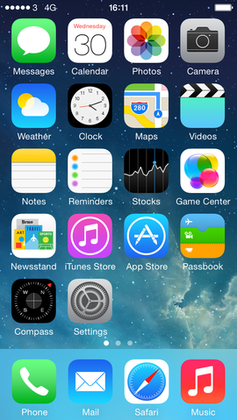
iOS 7 is the seventh major release of the iOS mobile operating system developed by Apple Inc., being the successor to iOS 6. It was announced at the company's Worldwide Developers Conference on June 10, 2013, and was released on September 18 of that year. It was succeeded by iOS 8 on September 17, 2014.
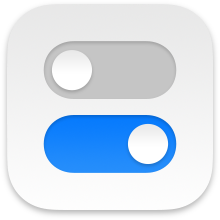
Control Center is a feature of Apple Inc.'s iOS, iPadOS, and macOS operating systems. It was introduced as part of iOS 7, released on September 18, 2013. It gives iOS and iPadOS devices direct access to important settings for the device by swiping down from the top right corner on the iPhone X and newer, and on all iPad models starting with iOS 12 or iPadOS, with previous models using a swipe from the bottom of the screen. It is similar to the SBSettings tweak for iOS jailbreaking. Control Centre was also added to Macs in macOS 11 Big Sur, released on November 12, 2020.

iOS 8 is the eighth major release of the iOS mobile operating system developed by Apple Inc., being the successor to iOS 7. It was announced at the company's Worldwide Developers Conference on June 2, 2014, and was released on September 17, 2014. It was succeeded by iOS 9 on September 16, 2015.

iOS 9 is the ninth major release of the iOS mobile operating system developed by Apple Inc., being the successor to iOS 8. It was announced at the company's Worldwide Developers Conference on June 8, 2015, and was released on September 16, 2015. It was succeeded by iOS 10 on September 13, 2016.
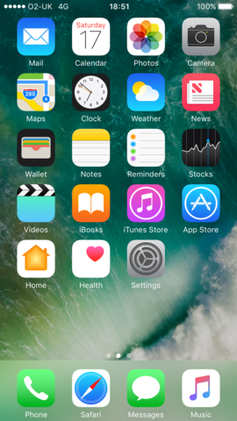
iOS 10 is the tenth major release of the iOS mobile operating system developed by Apple Inc., being the successor to iOS 9. It was announced at the company's Worldwide Developers Conference on June 13, 2016, and was released on September 13, that year. It was succeeded by iOS 11 on September 19, 2017.

macOS Sierra is the thirteenth major release of macOS, Apple Inc.'s desktop and server operating system for Macintosh computers. The name "macOS" stems from the intention to unify the operating system's name with that of iOS, iPadOS, watchOS and tvOS. Sierra is named after the Sierra Nevada mountain range in California and Nevada. Its major new features concern Continuity, iCloud, and windowing, as well as support for Apple Pay and Siri.

Clock is a timekeeping mobile app available since the initial launch of the iPhone and iPhone OS 1 in 2007, with a version later released for iPads with iOS 6, and Macs with the release of macOS Ventura. The app consists of a world clock, alarm, stopwatch, and timer.

iOS 11 is the eleventh major release of the iOS mobile operating system developed by Apple Inc., being the successor to iOS 10. It was announced at the company's Worldwide Developers Conference on June 5, 2017, and released on September 19, 2017. It was succeeded by iOS 12 on September 17, 2018.

iOS 12 is the twelfth major release of the iOS mobile operating system developed by Apple Inc. Aesthetically similar to its predecessor, iOS 11, it focuses more on performance than on new features, quality improvements and security updates. Announced at the company's Worldwide Developers Conference on June 4, 2018, iOS 12 was released to the public on September 17, 2018. It was succeeded for the iPhone and iPod Touch by iOS 13 on September 19, 2019 and for the iPad by iPadOS 13 on September 24, 2019. Security updates for iOS 12 continued for four years following the release of iOS 13 for devices unable to run the newer operating system. The last update, 12.5.7, was released on January 23, 2023.

macOS Mojave is the fifteenth major release of macOS, Apple Inc.'s desktop operating system for Macintosh computers. Mojave was announced at Apple's Worldwide Developers Conference on June 4, 2018, and was released to the public on September 24, 2018. The operating system's name refers to the Mojave Desert, and is part of a series of California-themed names that began with OS X Mavericks. It succeeded macOS High Sierra and was followed by macOS Catalina. This is also the last version to include the iTunes app.
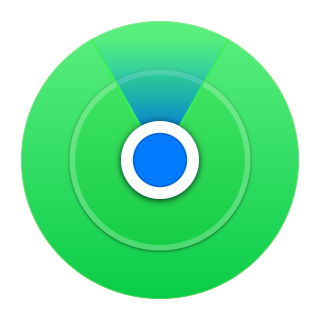
Find My is an asset tracking service made by Apple Inc. that enables users to track the location of iOS, iPadOS, macOS, watchOS devices, AirPods, AirTags and a number of supported third-party accessories through a connected iCloud account. Users can also share their GPS locations to others with Apple devices and view the location of others who choose to share their location. Find My was released alongside iOS 13 on September 19, 2019, merging the functions of the former Find My iPhone into a single app. On watchOS, Find My is separated into three different applications: Find Devices, Find People and Find Items.
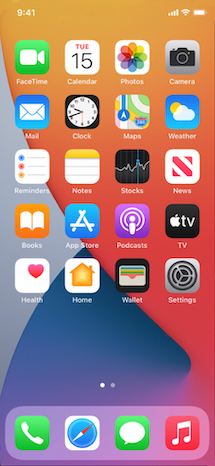
iOS 14 is the fourteenth major release of the iOS mobile operating system developed by Apple Inc. for their iPhone and iPod Touch lines. Announced at the company's Worldwide Developers Conference on June 22, 2020 as the successor to iOS 13, it was released to the public on September 16, 2020. It was succeeded by iOS 15 on September 20, 2021.

The HomePod Mini is a smart speaker developed by Apple Inc. The HomePod Mini was released on November 16, 2020. Roughly a 10 cm sphere, it was released as a smaller and less expensive version of Apple's HomePod.

Pre-installed iOS apps, referred to in the App Store as 'Built-In Apps', are a suite of mobile applications developed by Apple Inc. which are bundled with iOS and installed by default or through a system update. Many of the default apps found on iOS have counterparts on Apple's other operating systems macOS, iPadOS, watchOS, and tvOS, which are often modified versions of or similar to the iOS application. As each app is integrated into the operating system itself, they often feature greater support for system features than third-party alternatives and are quick to adapt new features of iOS.

iOS 15 is the fifteenth major release of the iOS mobile operating system developed by Apple for its iPhone and iPod Touch lines of products. It was announced at the company's Worldwide Developers Conference on June 7, 2021, as the successor to iOS 14, and released to the public on September 20, 2021.

The iPhone 13 Pro and iPhone 13 Pro Max are smartphones designed, developed and marketed by Apple Inc. They were the flagship smartphones in the fifteenth generation of the iPhone, succeeding the iPhone 12 Pro and iPhone 12 Pro Max respectively. The devices were unveiled alongside the iPhone 13 and iPhone 13 Mini at an Apple Special Event at Apple Park in Cupertino, California on September 14, 2021, and became available ten days later, on September 24. They were discontinued on September 7, 2022, as well as the iPhone 11 and iPhone 12 mini, following the announcement of the iPhone 14 and iPhone 14 Pro.
The marketing of Apple Inc. encompasses the company's advertising, distribution, and branding. After Steve Jobs returned to Apple in 1997, he made industrial design a key element of the company's branding strategy. Apple's public image has been shaped by several acclaimed advertisements made in partnership with TBWA\Chiat\Day, including 1984 and Get a Mac. Many of Apple's product announcements occur during keynote speeches the company gives several times a year, at Apple Special Events or at Apple's Worldwide Developers Conference, that help reinforce Apple's brand.
References
- ↑ Keller, Joseph (April 18, 2018). "How to use Night Shift on your Mac". iMore . Retrieved 2018-06-18.
- 1 2 3 4 Ritchie, Rene (March 5, 2018). "How to use Night Shift on your iPhone or iPad". iMore . Retrieved 2023-03-20.
- ↑ "Can Apple's color-shifting screen really help you fall asleep faster?". The Verge. 2016-03-29. Retrieved 2017-04-29.
- ↑ "iOS 9.3: The new Night Shift feature probably won't help you sleep better". Macworld. Retrieved 2017-04-29.
- ↑ Bell, Karissa (15 January 2016). "F.lux creators ask Apple to open Night Shift features to developers". Mashable. Retrieved 2017-04-29.
- ↑ Bell, Karissa (21 March 2016). "How to use Apple's new Night Shift feature in iOS 9.3". Mashable. Retrieved 2017-05-20.
- ↑ Duraccio, Kara M.; Zaugg, Kelsey K.; Blackburn, Robyn C.; Jensen, Chad D. (August 2021). "Does iPhone night shift mitigate negative effects of smartphone use on sleep outcomes in emerging adults?". Sleep Health. 7 (4): 478–484. doi:10.1016/j.sleh.2021.03.005. PMID 33867308. S2CID 233299395.
- ↑ "New LRC Study Evaluates the Effectiveness of Apple's iPad Night Shift Application" (Press release). 2018-02-05. Archived from the original on 2022-01-15. Retrieved 2021-09-16.
- ↑ Nagare, R; Plitnick, B; Figueiro, Mg (May 2019). "Does the iPad Night Shift mode reduce melatonin suppression?". Lighting Research & Technology . 51 (3): 373–383. doi:10.1177/1477153517748189. PMC 6561503 . PMID 31191118.
- ↑ Mouland, Joshua W.; Martial, Franck; Watson, Alex; Lucas, Robert J.; Brown, Timothy M. (December 2019). "Cones Support Alignment to an Inconsistent World by Suppressing Mouse Circadian Responses to the Blue Colors Associated with Twilight". Current Biology. 29 (24): 4260–4267.e4. doi:10.1016/j.cub.2019.10.028. PMC 6926481 . PMID 31846668.
- 1 2 Benjamin, Jeff (2016-03-23). "How-To: Set up and use Night Shift mode on iPhone and iPad [Video]". 9to5Mac. Retrieved 2017-04-29.
- 1 2 "How to Use Night Shift in macOS Sierra 10.12.4" . Retrieved 2017-04-29.
- ↑ "How to enable Night Shift in iOS 9.3". CNET. Retrieved 2017-04-29.
- ↑ Wong, Raymond (24 January 2017). "Apple's upcoming Mac update will include a long-awaited feature that will help you sleep". Mashable. Retrieved 2017-04-29.
- ↑ Hall, Zac (2017-01-25). "How to enable Night Shift for Mac and how it works on macOS 10.12.4 [Video]". 9to5Mac. Retrieved 2017-04-29.
- ↑ "How to Use Night Shift Mode in iOS 9.3" . Retrieved 2017-04-30.
- ↑ "How to adjust macOS Sierra 10.12.4's Night Shift settings". Macworld. Retrieved 2017-04-29.